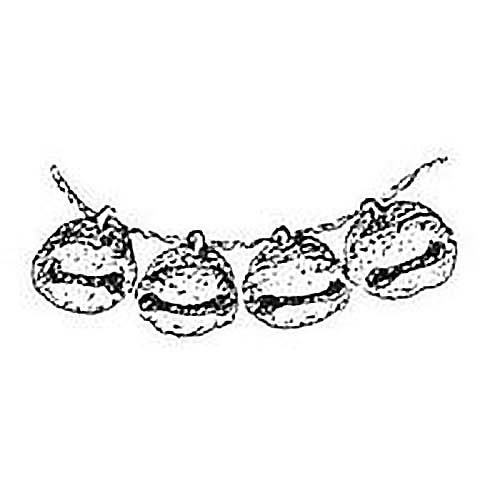huangling overview
 Huanling (pinyin: Huǎng líng), Chinese translation of "bell rod", is named for the way it is made. Also known as copper bell, bell, god bell. It is Manchu, Daur, Mongolian and other ethnic groups that shake the body and sound musical instruments. Manchu called "Hongwu" (Hongwu). Popular in Liaoning, Jilin, Heilongjiang and eastern parts of Inner Mongolia Autonomous Region.
Huanling (pinyin: Huǎng líng), Chinese translation of "bell rod", is named for the way it is made. Also known as copper bell, bell, god bell. It is Manchu, Daur, Mongolian and other ethnic groups that shake the body and sound musical instruments. Manchu called "Hongwu" (Hongwu). Popular in Liaoning, Jilin, Heilongjiang and eastern parts of Inner Mongolia Autonomous Region.It is called "bell pole" in "The Manchu Manchu Sacrifice to God and Heaven". The so-called "God" is intangible, but in the shaman's vision, it is also tangible - "shape" with sound. Therefore, many gods go down to the realm with the bell, that is, the sound of the bell symbolizes the coming of the god. For example, when the shaman surnamed Jilin invited "Makjimoni", the god "carried the bell, which was as bright as a towel". Standing, shaking and playing, the golden bells came in singing the divine song."
The specific shape of the bell was recorded in some local chronicles at the beginning of this century. According to the shaking bell recorded in the "Hulan Fu Zhi", its shape is "made of wood, two and a half feet long, with several copper bells on the top of the pole". The shaking bells recorded in the "Yilan County Chronicle" are in the shape of "made of two thin oak sticks, three feet long, and each stick is tied with five copper bells". It can be seen that the shaking bell is composed of two parts: the bell rod and the bell. This kind of shaking bell is still popular in Manchu folk shaman dance activities.
Shaking bells are generally not used alone, but are often played in conjunction with waist bells. It has two basic ways of use, one is to tie the bell to the bell rod and shake it with the wooden rod; the other is to take the bell off the bell rod and shake it directly by hand. Its playing method is to make a sound by shaking the bell rod by hand, which is called "shaking the bell", which is its basic playing method; The vibrating sound is called "ringing".
In "Chinese Minority Musical Instruments" and "Chinese Musical Instruments", the shaking bells in two different ways of use are divided into two separate entries: "shaman bell" and "hongwu". According to its meaning, the shape of "shaman bell" is the same as the first way of using the bell as explained in this article (the bell is tied to the bell pole to play), while the shape of "hongwu" is the same as that described in this article. The second way to use the shaky bell (unplug the bell from the bell rod and play it) is the same. According to the author's research, whether it is the records of historical records (such as "Hulan House Chronicle", "Yilan County Chronicle" and other historical records) or fieldwork (such as the shaking bells of shamans such as Ningguta Fuchahala and so on) ), the "Hung Wu" used by the Manchu shaman dance gods is a musical instrument composed of two parts: a bell and a "rod". Therefore, the so-called "shaman bell" in the above two books should be "Hang Wu", that is The shaking bell explained in this article; and the so-called "Hongwu" in this book is actually just another way of using it. If it refers specifically to the shamanic instrument "Hongwu", it is wrong.
- Pinyin:Huǎng líng
- alias:bronze bell
- user:shaman
- Operation:pray
reference materials and contributors
- 晃铃 · 百度百科
- 晃铃 · 搜狗百科
- 晃铃历史与特色简介 民族乐器晃铃图片及演奏方法介绍 · 乐器资料
- 晃铃(满族) · 天眼查
overview of other similar instruments
- sanyanxiao overview
- Daguangxian overview
- Leiqin overview
- hahao overview
- yandundagu overview
- Han Xiaozheng overview
- Fang Xiang overview
- guanzi overview
- zhuqin (Dao Qin) overview
- zhuiqin overview
- bangzi overview
- three-stringed piano overview
- Gehu overview
- xiao overview
- xiaokonghou overview
- Konghou overview
- Sheng overview
- suona overview
- hulusi overview
- gushao overview
 渝公网安备 50010702504639号
渝公网安备 50010702504639号